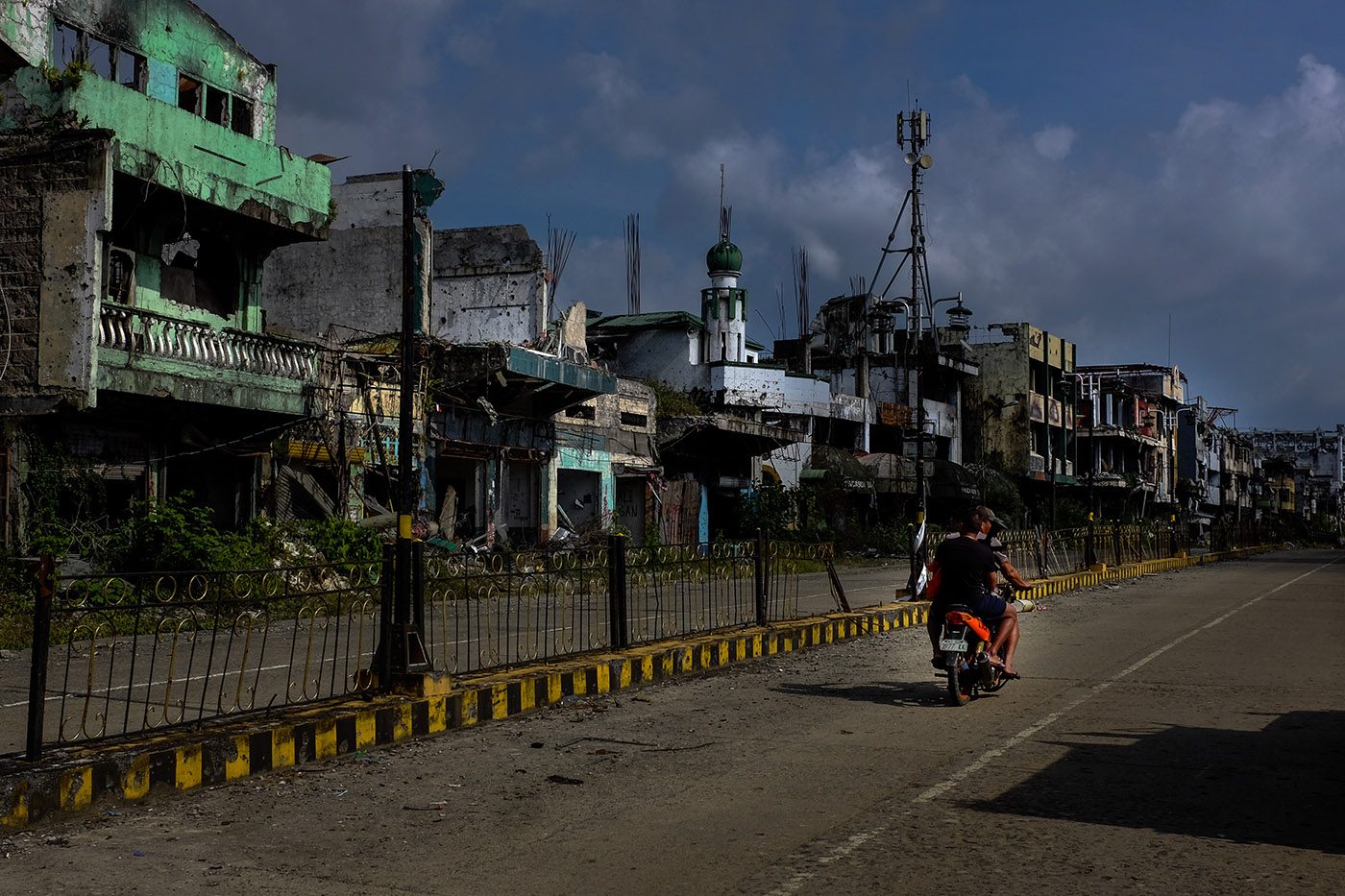SUMMARY
This is AI generated summarization, which may have errors. For context, always refer to the full article.

MANILA, Philippines – President Rodrigo Duterte’s imposition of martial law in Muslim Mindanao was the “single most important reason” behind the drop in conflict and related deaths in that area in 2018, according to a report released by conflict monitoring group International Alert Philippines (IAP).
The increased presence of military and police through checkpoints and the imposition of curfew meant armed groups could not freely move around with guns or transport guns, IAP said in its Conflict Alert 2019 report released on on Tuesday, September 3.
The IAP report cited the “plunge” in conflict incidents and conflict deaths in 2018, compared to the extraordinarily bloody years of 2017 and 2016.
The group recorded 2,910 conflict incidents in the Autonomous Region in Muslim Mindanao (now replaced by the larger Bangsamoro Autonomous Region in Muslim Mindanao or BARMM) in 2018. This is an almost 30% drop from the 4,140 incidents recorded the year before.
The number of gun-related deaths was reduced by 31%, from 1,290 in 2017 to 891 in 2018. Bombings declined to 166 incidents in 2018, from 193 in 2017.
In terms of deaths from conflicts, 2018 saw a plunge from the 2017 and 2016 figures too, the report said.
Nine hundred people were killed in such clashes in 2018, less than half the 2,261 deaths in 2017, many due to the 5-month Marawi siege.
“The 2018 drop in conflict incidents demonstrates a retreat from the most violent years (2016 and 2017) in the Bangsamoro, as lesser violence resulted from fewer gun battles and explosions as extremists engaged in sporadic clashes against government troops,” the report said.
All provinces save Tawi-Tawi saw a drop in both number of conflict incidents and number of deaths caused by conflict.
The biggest drop in the number of conflicts incidents from 2017 to 2018 was seen in Lanao del Sur and Maguindanao (including Cotabato City). This was largely because Lanao del Sur did not see a repeat of a Marawi-scale attack.
The improvement in the security situation put the Bangsamoro region in a “sweet spot,” giving the new interim Bangsamoro government an opportunity to bring reforms and development to the area, said IAP.
Still, the years 2016 to 2018 cumulatively saw more violence than the 3 years before it.
The years 2016 to 2018 saw an average of 3,804 conflict incidents, more than double the 1,622 average number of incidents from 2013 to 2015.
Thus, the last 3 years set a “higher bar” for the severity of conflict in Muslim Mindanao, compared to the 2011 to 2015 period.
‘Resilience’ of extremist violence
Despite the gains, Muslim Mindanao continues to reel from extremist violence, IAP’s report also showed.
Amid the overall decline in conflict incidents and deaths, extremist violence remained the number one cause of deaths in Muslim Mindanao.
In 2018, 311 people died due to extremist violence, IAP said. The 264 deaths due to illicit firearms came in second, followed by a far third, personal grudge, which accounted for 63 deaths.
IAP also saw a “spillover” in extremist violence in 2018. Its map of violent extremist incidents in Muslim Mindanao showed incidents occuring “outside the usual hotspots of extremist groups.” They had spread to the borders of Maguindanao, North Cotabato, and Sultan Kudarat, and towns located along Lanao Lake.
It was in 2018 when suicide bombers killed at least 10 people in Basilan, a portent of the 2019 suicide bombings in Jolo Cathedral and Indanan, Sulu, the latter including the first reported Filipino suicide bomber.
Critical control of firearms
Given its observation of martial law’s impact, IAP said any decision to lift martial law must be backed by a plan to control firearms.
“We’re not arguing for an extension of martial law. What we’re saying is that any plan to lift martial law should first be preceded by a major political settlement and agreement about the management and the carrying and the use of firearms,” IAP Senior Peace and Conflict Adviser Francisco Lara Jr said in a news conference on Tuesday.
Leaders of political clans, the national government, and the Bangsamoro Transition Authority must come up with an agreement on how to regulate loose firearms so they don’t end up in the hands of people capable of inflicting violence.
If no such agreement is reached “there is a very real possibility of a return to the previous situation and the demolition of the fragile peace in the Bangsamoro,” said Lara.
Bangsamoro Interim Chief Minister Murad Ebrahim said in a Rappler interview that controlling loose firearms and disbanding private armies is a priority of his administration.
Martial law has been in place in Mindanao since May 2017, when Muslim extremists took control of Marawi City leading to a 5-month battle with government troops. It has been extended thrice, putting it in place until December 31 this year.
Fruits of martial law
Martial law was not implemented the same way in the 5 BARMM provinces, said IAP.
In Maguindanao, which reported the highest cases of conflicts, the police strictly enforced curfew. In Cotabato City, IAP observed increased police visibility in barangays and strict monitoring of the entry of people and vehicles.
In Lanao del Sur, the province where Marawi is located, there was strict implemenation of checkpoints and curfew and increased military presence during the May elections and special September elections in Marawi.
In Sulu, an increase in the number of military checkpoints meant a shorter distance between checkpoints, making it difficult to transport firearms. In Basilan, the military did not hesitate to impose lockdowns during emergencies, like the July 2018 Lamitan City bombing.
IAP also credited the military’s sustained crackdown on the Abu Sayyaf Group in Sulu and Basilan which led to more surrenderers in 2018 than in 2017. – Rappler.com
Add a comment
How does this make you feel?
There are no comments yet. Add your comment to start the conversation.